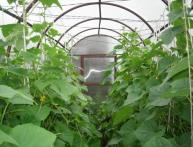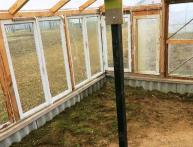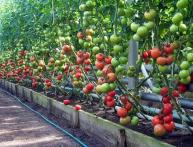Growing eggplants in a greenhouse: rules and recommendations

It is unlikely that there is at least one gardener who has never tried to grow crops in a greenhouse. The most common garden crops grown indoors (that is, in all kinds of greenhouses, greenhouses and similar structures) are tomatoes, cucumbers, radishes, carrots, bell peppers and lettuce. And recently, growing eggplants in a greenhouse has become extremely popular.
Growing eggplants in a greenhouse is a relatively simple process, but it has its own subtleties and features, the observance of which will ensure a rich harvest. So, eggplants require a sufficient amount of space for normal development, so you should sow a maximum of two seeds in one pot. Moreover, if both of them sprout, the weaker sprout must be removed. However, you can save yourself the difficulties associated with germinating seeds and simply purchase special cassettes with seedlings.
When planting seedlings, which, depending on the temperature, is carried out in mid- to late spring, it is necessary to ensure that there is at least 60 centimeters of free space between two plants. Eggplant bushes can reach almost a meter in height, so their main stem must be tied to a support.
You can start harvesting eggplants as soon as the fruits reach 8-10 centimeters in length and their skin becomes shiny.You shouldn’t wait for them to “pour”, as overripe eggplants are quite bitter and literally overflowing with a lot of seeds.









Comments
In fact, it turns out that growing eggplants is not that difficult. How long does it take for eggplants to ripen before they can be used for preparations, for example? We have a short summer in the North-West - eggplants probably won’t even ripen in a greenhouse.